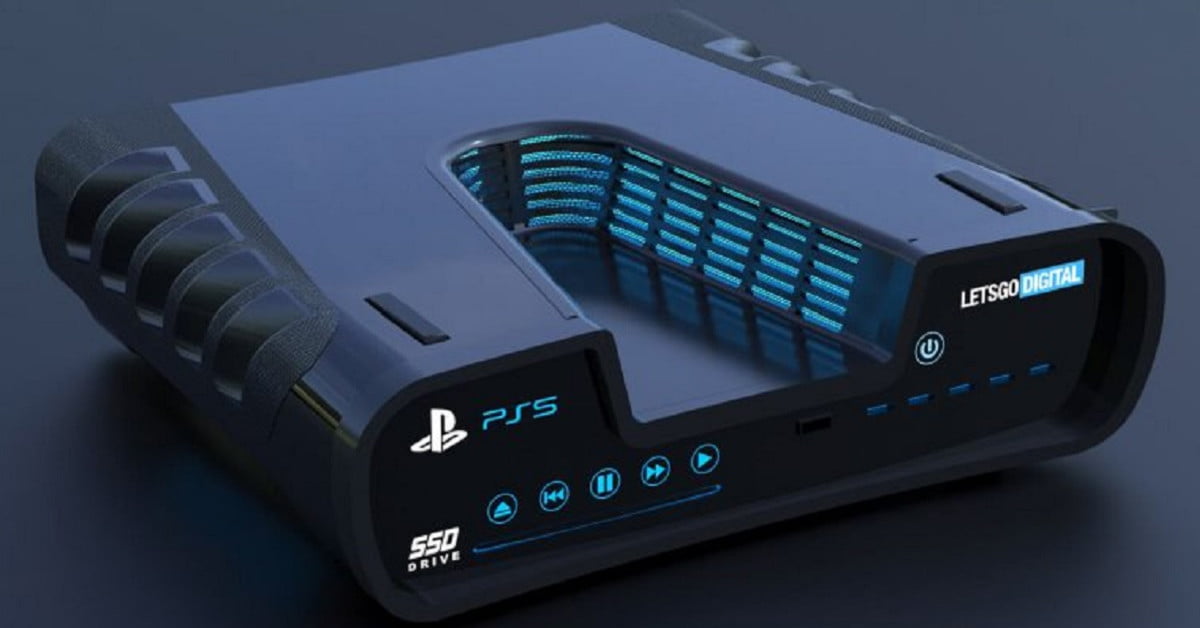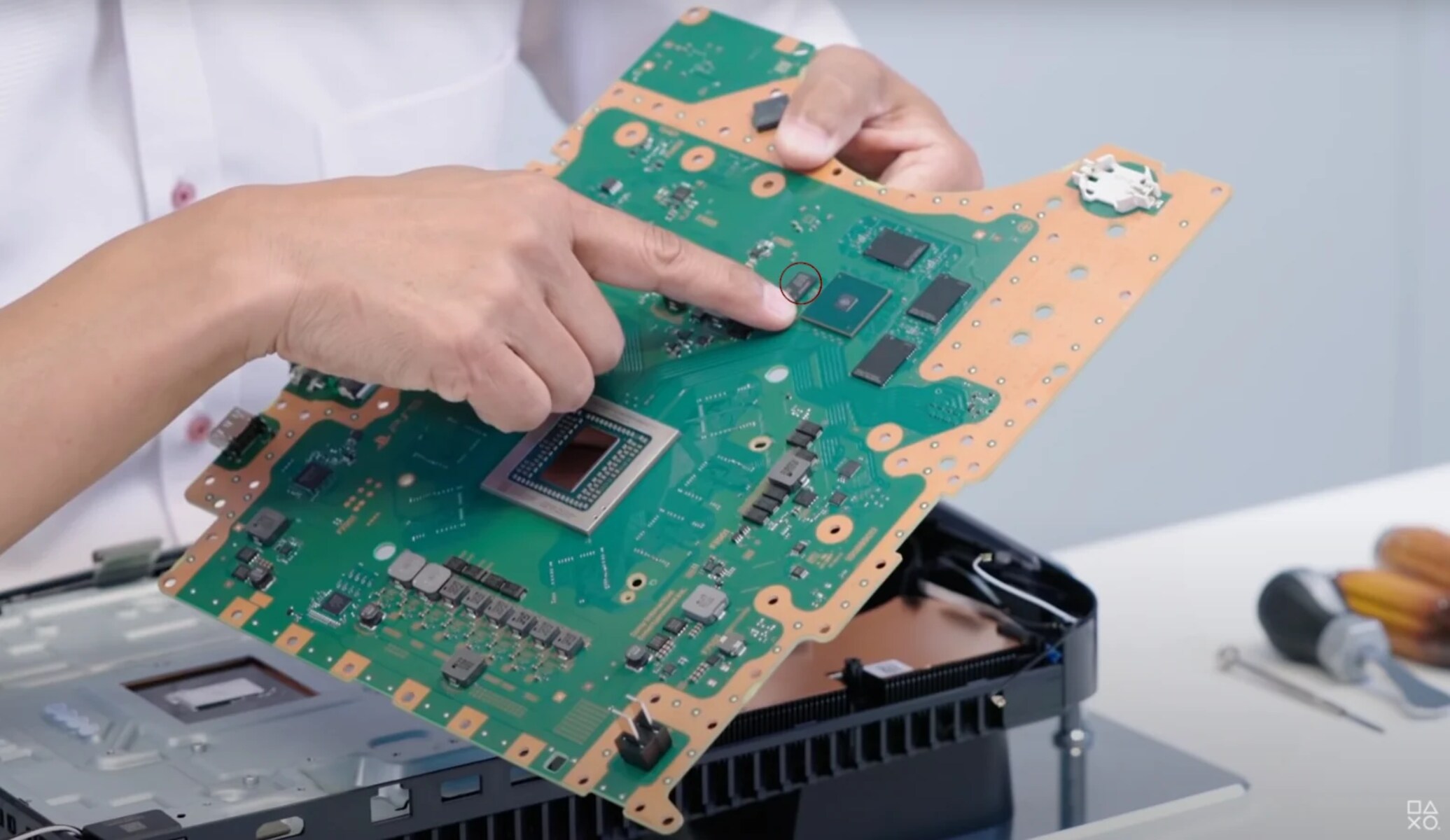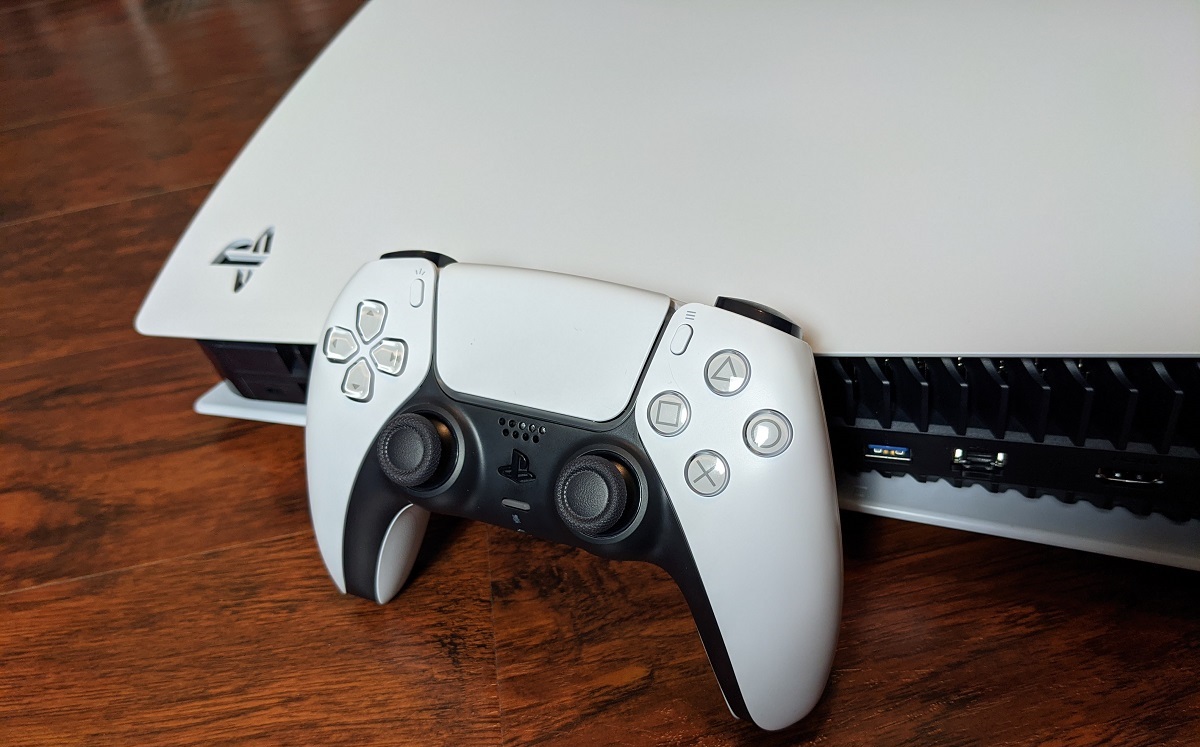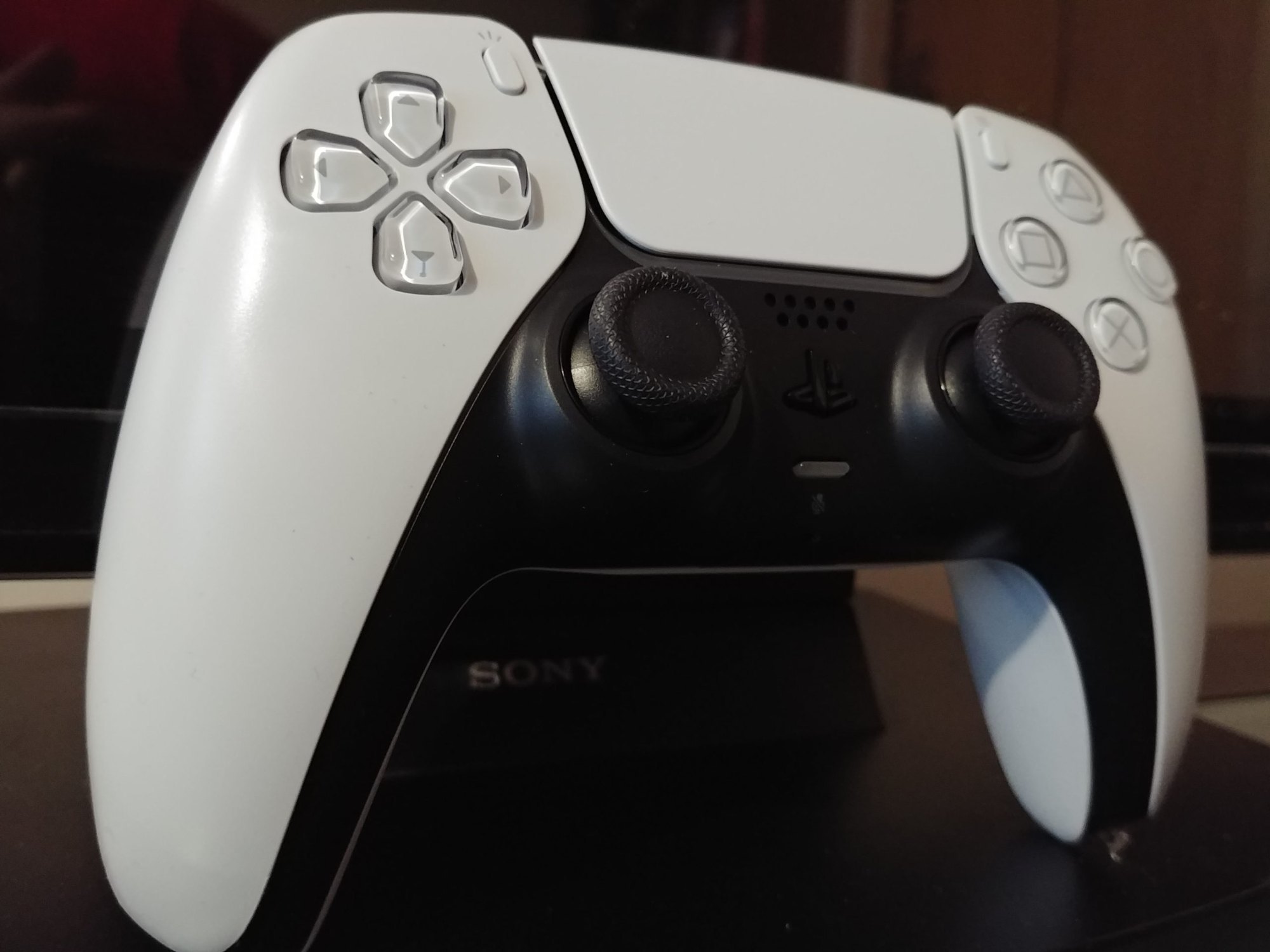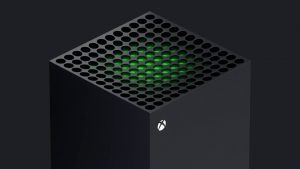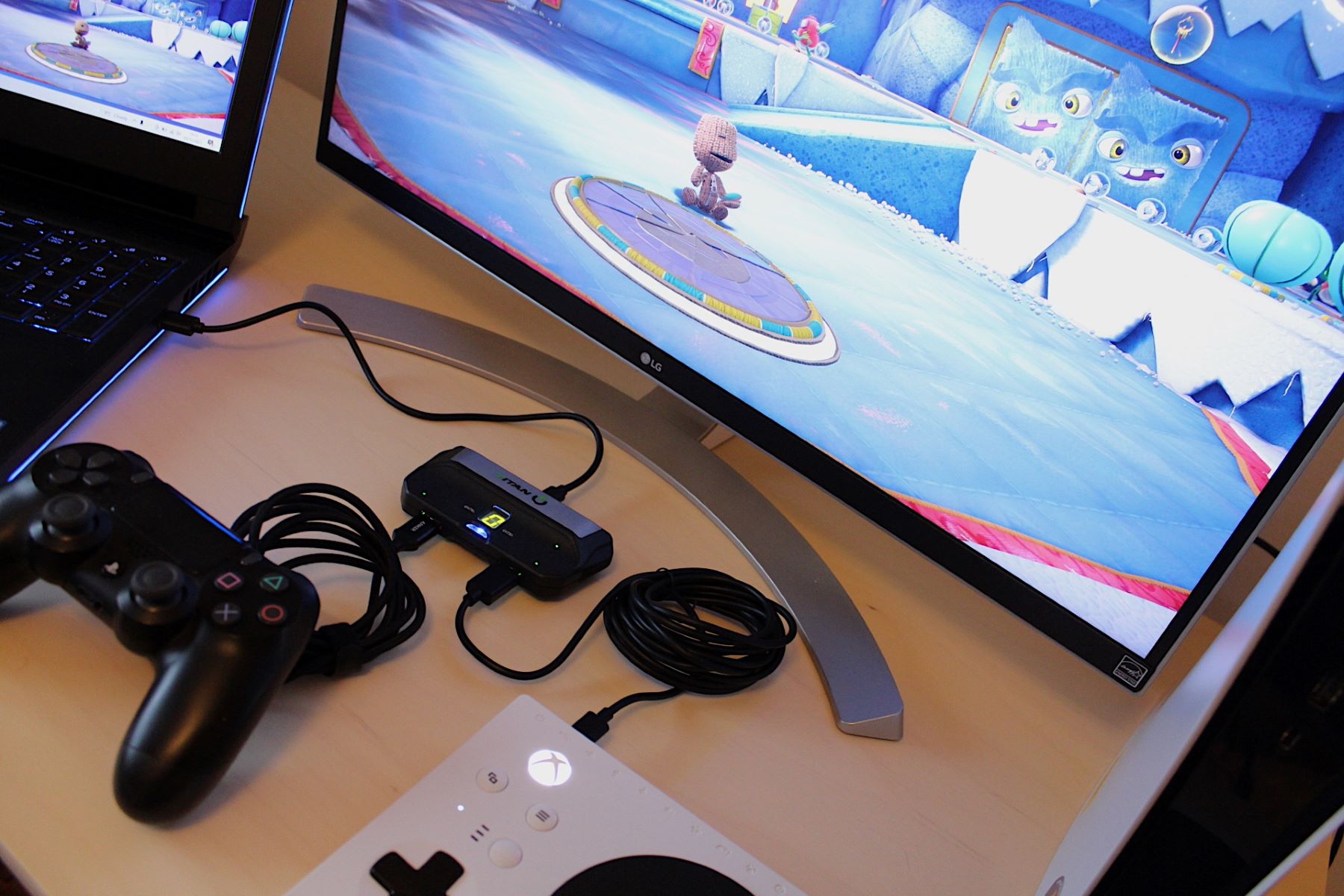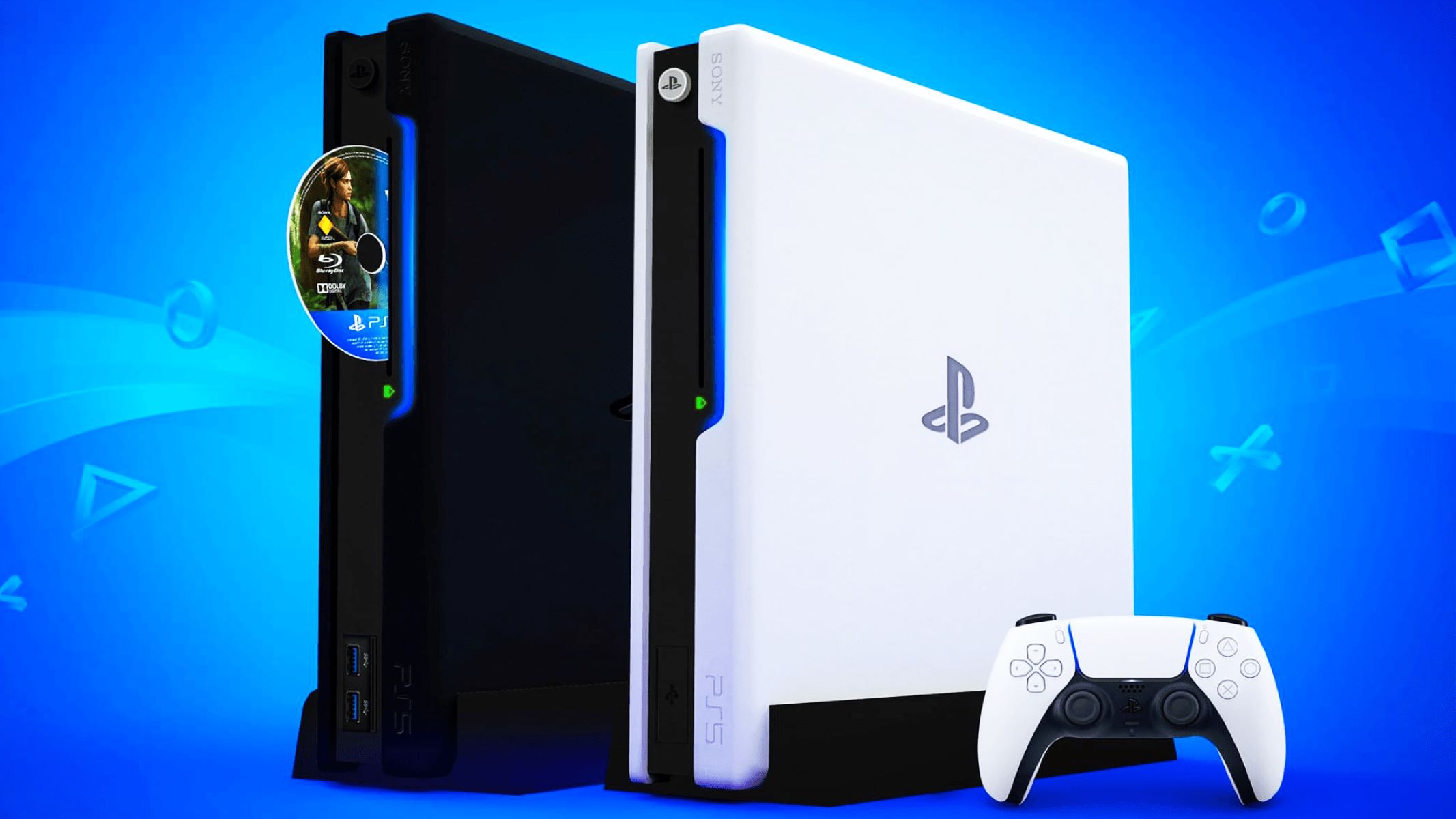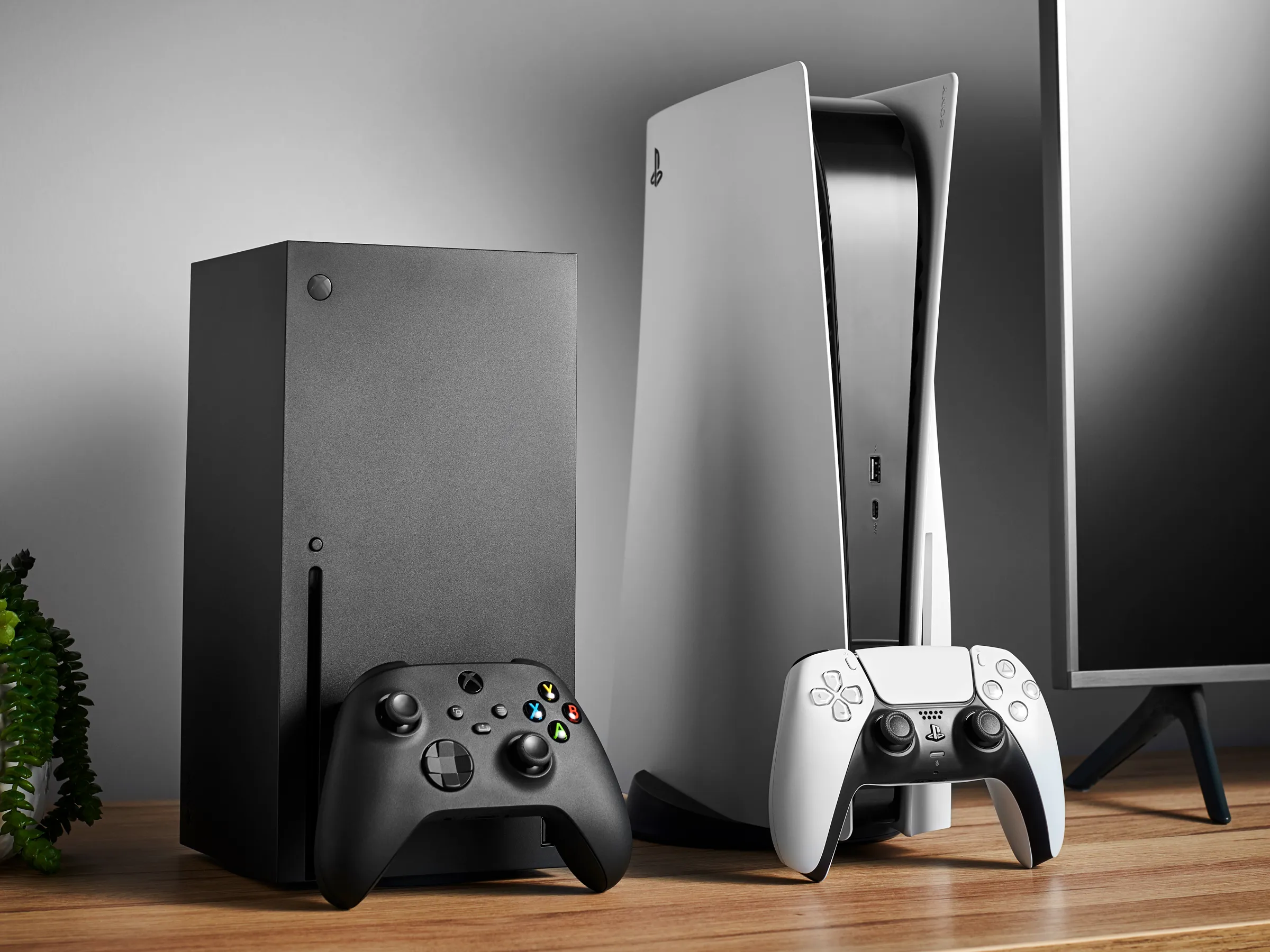Introduction
Welcome to the next generation of gaming! With the release of the PlayStation 5 (PS5), gamers around the world are excited about the incredible advancements in technology and gameplay experiences. One of the key components that plays a crucial role in delivering a seamless and immersive gaming experience is the RAM (Random Access Memory) of the console.
In this article, we will dive into the world of RAM and explore exactly how much RAM the PS5 has, as well as the benefits of having ample amounts of RAM in a gaming console. We will also touch on the impact of RAM on load times, graphical fidelity, and how game developers allocate RAM to optimize their creations for the PS5.
The PS5 has garnered significant attention for its impressive hardware capabilities, and RAM is no exception. Understanding the importance of RAM in gaming performance will help us appreciate the advancements and improvements that the PS5 brings to the table. So, let’s buckle up and get ready to explore the world of RAM in the PS5.
Overview of the PS5’s RAM
The PS5 is equipped with a powerful custom-designed system-on-a-chip (SoC) that incorporates a state-of-the-art AMD Zen 2 processor and an advanced GPU. However, the performance of these components can be greatly optimized when paired with sufficient RAM.
The PS5 features 16GB of GDDR6 RAM, which is a significant upgrade from its predecessor, the PS4, which had 8GB of GDDR5 RAM. This increase in memory allows for more data to be stored and processed, resulting in improved performance and smoother gameplay.
Moreover, the PS5 utilizes a 256-bit memory interface, providing an impressive memory bandwidth of 448GB/s. This high bandwidth ensures that data can be quickly accessed and transferred, reducing latency and improving overall system responsiveness.
Additionally, the PS5 employs a revolutionary memory hierarchy system that includes a combination of high-speed RAM and solid-state storage. This design allows for seamless loading and streaming of game assets, minimizing loading times and enhancing the overall gaming experience.
Furthermore, the PS5’s RAM is unified, meaning that both the CPU and GPU have direct access to the entire pool of memory. This unified memory architecture enables faster data exchange between the CPU and GPU, facilitating faster computations and rendering of complex game visuals.
In summary, the PS5’s RAM configuration plays a crucial role in enhancing the console’s overall performance. With its increased capacity, high bandwidth, and unified architecture, the PS5 is capable of delivering an unprecedented level of gaming immersion and innovation.
How much RAM does the PS5 have?
The PlayStation 5 boasts an impressive 16 gigabytes (GB) of GDDR6 RAM, which is double the amount of RAM found in the previous-generation PS4. This substantial increase in memory allows for faster data processing and a smoother gaming experience.
When compared to its competitors, such as the Xbox Series X, the PS5 matches its 16 GB RAM configuration. However, what sets the PS5 apart is its innovative memory architecture and utilization of high-speed GDDR6 RAM.
Of the total 16 GB RAM, the PS5 reserves a portion for system-level operations, leaving around 13 GB available for game developers to utilize. This ample amount of memory enables developers to create vast and immersive game worlds with detailed textures, advanced physics simulations, and complex AI systems.
Moreover, the PS5’s fast and efficient GDDR6 RAM allows for quick loading of assets, minimizing loading times between game sections and providing a more seamless gameplay experience. This is further enhanced by the PS5’s powerful custom SSD, which works in tandem with the RAM to ensure smooth and uninterrupted gameplay.
It’s worth noting that the PS5’s RAM isn’t just about quantity; it’s also about quality. GDDR6 RAM is known for its high bandwidth and low latency, which means that data can be accessed and processed rapidly, resulting in faster rendering of graphics and improved performance across the board.
With its generous allocation of RAM and utilization of cutting-edge GDDR6 technology, the PS5 is able to handle demanding games and deliver stunning visuals, smooth frame rates, and immersive gameplay unlike anything seen before in console gaming.
The benefits of having more RAM in a gaming console
Having ample amounts of RAM in a gaming console, like the PS5, brings several benefits that greatly enhance the overall gaming experience. Let’s explore some of these benefits:
1. Improved Performance: More RAM allows for faster data access and processing, resulting in smoother gameplay, reduced loading times, and quicker transitions between game sections. Games can also utilize larger and more detailed assets without sacrificing performance.
2. Enhanced Visuals: With more RAM, game developers can allocate additional memory for graphics and visual effects. This enables them to create more realistic and immersive environments, with higher-resolution textures, detailed character models, and advanced lighting and particle effects.
3. Better AI and Physics: RAM is crucial for handling complex artificial intelligence systems and physics simulations in games. With more available memory, developers can create more intelligent and dynamic NPCs, as well as realistic physics interactions, adding depth and realism to the gameplay.
4. Seamless Game Worlds: A larger RAM capacity allows for seamless streaming of game assets, reducing pop-in and maintaining a consistent level of detail throughout the game world. This creates a more immersive experience, especially in open-world games where exploration is a key element.
5. Multitasking and Quick Resume: With more RAM, gaming consoles can handle multitasking capabilities, allowing players to switch between games and applications without losing progress. This feature, such as the PS5’s Quick Resume, enables a seamless transition, enhancing convenience and productivity.
6. Future-Proofing: As games become more demanding with improved graphics and larger worlds, having more RAM ensures that the console can handle future game releases. It provides longevity to the console and allows gamers to enjoy upcoming games without worrying about hardware limitations.
In summary, having more RAM in a gaming console like the PS5 brings a multitude of benefits, including enhanced performance, improved visuals, more realistic AI and physics, seamless game worlds, multitasking capabilities, and future-proofing. These benefits contribute to a more immersive and enjoyable gaming experience that pushes the boundaries of console gaming.
Understanding the role of RAM in gaming performance
RAM (Random Access Memory) is a vital component that plays a crucial role in determining the performance and responsiveness of a gaming console like the PS5. It acts as temporary storage for data that the console’s CPU and GPU need to access quickly during gameplay. Let’s delve deeper into the role of RAM in gaming performance:
1. Data Storage and Access: RAM functions as a temporary storage space for game data, including textures, models, audio files, and game logic. When the CPU or GPU needs to retrieve this data for processing, having more RAM allows for quicker access, reducing load times and ensuring smooth gameplay.
2. Game Asset Loading: RAM plays a critical role in loading and streaming game assets. When transitioning from one game area to another or from one level to the next, assets like textures and environmental details need to be loaded into memory rapidly. Sufficient RAM ensures seamless asset loading, preventing stuttering or delays in gameplay.
3. Multiplayer and Online Gaming: In multiplayer and online gaming scenarios, RAM is essential for storing and managing data related to other players, their actions, and the current state of the game world. Having ample RAM allows for efficient processing of this data, ensuring a smooth and responsive online gaming experience.
4. Texture and Asset Quality: RAM capacity affects the visual quality in games. High-resolution textures, detailed character models, and advanced visual effects require more RAM to store and load. With limited RAM, games may have to sacrifice visual fidelity or dynamically load lower-resolution assets, potentially impacting the overall visual experience.
5. Game Performance Optimization: Efficient utilization of RAM is crucial for game developers to optimize game performance. Allocating the right amount of RAM for different game components, such as AI systems, physics simulations, and audio processing, ensures that resources are used effectively, resulting in a smoother and more immersive gaming experience.
6. System Memory Management: RAM also plays a role in memory management. The console’s operating system, background processes, and system-level operations require a portion of RAM to function. A well-managed memory system allows for efficient resource allocation and ensures that there is enough available RAM for game performance without impacting overall system stability.
In summary, RAM is vital for gaming performance, as it determines how quickly game data can be accessed, loaded, and processed. Having sufficient RAM in a gaming console like the PS5 ensures smoother gameplay, faster loading times, improved visual quality, and efficient resource allocation, contributing to a more immersive and satisfying gaming experience.
Comparison of PS5’s RAM with previous console generations
The PlayStation 5 (PS5) represents a significant leap forward in terms of hardware capabilities, including its RAM configuration. Let’s compare the PS5’s RAM with previous console generations to understand the advancements in memory technology:
1. PS4 vs. PS5: The PS4, Sony’s previous console, featured 8GB of GDDR5 RAM. With the PS5, this has been doubled to 16GB of faster and more efficient GDDR6 RAM. The increased RAM capacity allows for more complex game worlds, improved visual fidelity, and smoother gameplay.
2. Xbox One vs. PS5: Microsoft’s Xbox One, a competitor to the PS4, also came with 8GB of DDR3 RAM, which was supplemented with 32MB of eSRAM for faster access. Comparatively, the PS5’s 16GB of GDDR6 RAM provides a significant performance advantage in terms of bandwidth and data processing capabilities.
3. Xbox Series X vs. PS5: The Xbox Series X, Microsoft’s next-gen console, matches the PS5’s RAM capacity with 16GB of GDDR6. However, differences in memory architecture and bandwidth allocation may result in variations in performance between the two consoles, even with the same RAM capacity.
4. PS3 and Xbox 360 vs. PS5: The PS3 and Xbox 360, predecessors to the PS4, had significantly lower RAM capacities of 256MB and 512MB, respectively. The leap from these older console generations to the PS5’s 16GB of RAM is astounding and allows for more ambitious game designs and improved overall performance.
5. PC Gaming: When comparing the PS5’s RAM to PCs, it is important to note that gaming PCs can have a wide range of RAM configurations. High-end gaming PCs typically offer 16GB, 32GB, or even 64GB of RAM. However, the PS5’s unified memory architecture and optimization for gaming result in efficient memory utilization and comparable performance despite the lower overall capacity.
Overall, the PS5’s RAM configuration represents a significant advancement when compared to previous console generations. With its substantial increase in capacity, faster GDDR6 technology, and efficient memory management, the PS5 delivers improved performance, enhanced visuals, and the ability to handle more demanding game experiences.
The impact of RAM on load times and graphical fidelity
RAM (Random Access Memory) has a direct impact on both the load times and graphical fidelity of games on consoles like the PlayStation 5 (PS5). Let’s explore how RAM influences these two important aspects of the gaming experience:
1. Load Times: RAM plays a crucial role in minimizing load times in games. When a game is launched, various assets, including textures, models, and audio files, need to be loaded into memory for quick access by the CPU and GPU. Insufficient RAM can result in longer load times as the console has to constantly fetch data from slower storage mediums like hard drives or solid-state drives (SSDs). With more RAM, a larger portion of game data can be stored in memory, reducing the need for frequent data retrieval from slower storage devices and resulting in faster load times.
2. Streaming and Open Worlds: The graphical fidelity and smoothness of streaming and open-world games heavily rely on RAM. In open-world games, as the player moves through the game world, new environments, objects, and textures need to be loaded and streamed dynamically. Sufficient RAM allows for quick loading and streaming of these assets, ensuring that there are no visible pop-ins or delays. It also enables the game to maintain a high level of graphical fidelity by storing larger and more detailed assets in memory, resulting in a visually immersive experience without compromising performance.
3. Texture and Asset Quality: RAM capacity directly affects the quality of textures and assets in games. With more RAM available, game developers can allocate a larger portion of memory for higher-resolution textures, detailed character models, and advanced visual effects. This results in visually stunning and realistic graphics, creating a more immersive and visually appealing gaming experience. Limited RAM may force developers to use lower-resolution textures or dynamically load assets, which can impact the overall visual fidelity of the game.
4. Dynamic Lighting and Effects: RAM is essential for rendering and storing dynamic lighting and visual effects in games. Complex lighting calculations, particle effects, and physics simulations require a significant amount of memory to ensure smooth operation. With ample RAM, consoles like the PS5 can handle the computational requirements of these effects, resulting in visually impressive and realistic lighting and visual effects.
5. Asset Caching and Efficiency: RAM not only allows for quick access to game data but also enables more efficient asset caching. When assets are loaded into RAM, they can be accessed much faster compared to retrieving them from slower storage mediums. This caching improves overall system performance and allows games to deliver a more consistent and uninterrupted gaming experience, with reduced stuttering and smoother transitions between different sections of the game.
In summary, RAM has a significant impact on load times and graphical fidelity in gaming. With sufficient RAM, games can load faster, stream assets seamlessly, and deliver high-quality textures and visual effects. RAM also enables efficient asset caching, ensuring a smooth and uninterrupted gaming experience, with improved performance and optimal graphical fidelity.
RAM allocation in game development for the PS5
Game developers for the PlayStation 5 (PS5) need to carefully allocate the available RAM to optimize performance and deliver the best possible gaming experience. Let’s explore how RAM is utilized in game development for the PS5:
1. Game Assets: RAM is primarily used to store and manage game assets such as textures, models, audio files, and animations. These assets are crucial for creating immersive and visually stunning game worlds. Game developers allocate a portion of the available RAM to load and hold these assets in memory, ensuring quick access during gameplay and minimizing loading times.
2. Level Design: RAM allocation is critical when it comes to level design in games. Different sections of a game level may require specific assets and data. Developers ensure that the necessary assets for each level section are loaded into memory in advance, allowing for smooth transitions and optimal performance. This prevents excessive loading in real-time, ensuring uninterrupted gameplay in large and complex game environments.
3. AI Systems: Artificial Intelligence (AI) heavily relies on RAM to store data related to in-game characters, NPCs, and enemy behavior. The more RAM available, the more complex and sophisticated AI systems can be created. Developers can allocate extra memory to AI calculations and decision-making processes, resulting in more intelligent and realistic AI behavior, enhancing immersion and engagement for players.
4. Physics Simulation: RAM plays a significant role in physics simulations within games. Physics calculations, such as object collisions, ragdoll physics, and environmental interactions, require a substantial amount of memory. Allocating sufficient RAM to physics simulations allows for more accurate and realistic physics interactions, adding depth and immersion to the game world.
5. Audio Processing: Sound effects, ambient noise, and music in games also benefit from RAM allocation. Developers can store audio assets in memory, allowing for quick access and seamless playback during gameplay. The allocation of RAM to audio processing ensures that sound effects sync accurately with the on-screen action, enhancing the overall gaming experience.
6. Performance Optimization: RAM allocation is a crucial part of game performance optimization for the PS5. Developers need to strike a balance between utilizing available RAM effectively and managing system resources. By allocating the right amount of memory for various game components, developers can optimize performance, reduce loading times, and ensure smooth and stable gameplay.
Overall, RAM allocation in game development for the PS5 is a meticulous process aimed at optimizing performance, delivering realistic and stunning visuals, managing AI systems, physics simulations, and audio processing. With careful allocation, game developers can make the most of the PS5’s hardware capabilities and provide players with immersive, seamless, and engaging gaming experiences.
Conclusion
The RAM (Random Access Memory) of the PlayStation 5 (PS5) plays a crucial role in delivering a next-generation gaming experience. With its 16GB of GDDR6 RAM, the PS5 offers improved performance, shorter load times, enhanced graphical fidelity, and seamless gameplay transitions.
The increased capacity and speed of the PS5’s RAM allows for faster data access and processing, enabling developers to create more immersive and visually stunning game worlds. This RAM allocation is essential for storing and managing game assets, such as textures, models, and audio files, resulting in quick access and reduced loading times during gameplay.
The PS5’s ample RAM also allows for more intricate AI systems, physics simulations, and complex audio processing. This leads to more intelligent NPC behavior, realistic physics interactions, and immersive soundscapes, respectively, enhancing the overall gaming experience.
Furthermore, the PS5’s unified memory architecture and efficient RAM allocation translate into seamless streaming of assets, minimizing pop-ins and maintaining a high level of graphical fidelity throughout open-world games. The combination of faster RAM and the custom SSD provides quick data retrieval, reducing loading screens and enhancing immersion.
Game developers have the responsibility to allocate RAM effectively to optimize performance and ensure a smooth gaming experience. By balance RAM usage between game assets, AI systems, physics simulations, and audio processing, developers can create games that take advantage of the PS5’s hardware capabilities, resulting in breathtaking visuals, immersive environments, and seamless gameplay.
In conclusion, the RAM of the PS5 is a cornerstone of its performance and immersive capabilities. With ample and efficient RAM allocation, the PS5 pushes the boundaries of gaming, delivering seamless experiences, stunning visuals, and enhanced gameplay that truly immerse players in dynamic and realistic virtual worlds.







